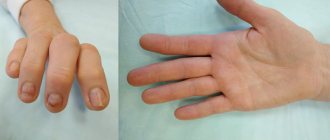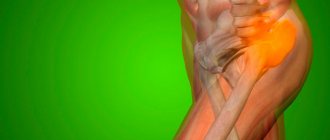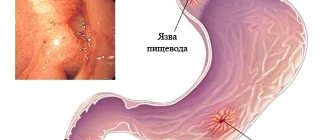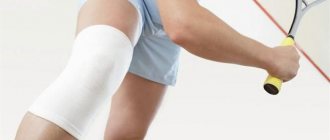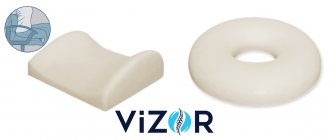Pharmacological properties of the drug Sustak
Nitroglycerin (glycerol trinitrate) is a vasodilator of the organic nitrate group. Sustak Forte tablets are a dosage form with gradual release of nitroglycerin for oral administration. Nitroglycerin reduces myocardial oxygen demand by reducing preload (dilatation of peripheral veins and decreased blood flow to the right atrium) and afterload (reduction in peripheral arterial resistance). In addition, nitroglycerin has a direct effect on the coronary vessels of the heart, causes a redistribution of coronary blood flow to areas with reduced blood circulation, increases coronary reserve, and reduces pressure in the pulmonary circulation. Sustak Forte provides a slow, gradual and uniform release of nitroglycerin. Part of the active substance is absorbed quickly, providing an effect within 10 minutes after its administration, further release and absorption of the active substance occurs more slowly, the effect of the drug lasts 10–12 hours. When taken orally, nitroglycerin is well absorbed, but is quickly metabolized during the initial passage through the liver. The pharmacokinetics of nitroglycerin is characterized by significant individual variability. The half-life is 1–3 minutes. About 60% of nitroglycerin is bound to blood plasma proteins. Volume of distribution - 3.3±1.2 l/kg. The drug is metabolized in the liver by reduction hydrolysis, partially in the blood serum by spontaneous hydrolysis and inorganic decomposition. Metabolites are 1,3- and 1,2-glyceryl dinitrite and oxidized glutathione. Metabolites that are excreted in bile are less active than nitroglycerin and have a longer half-life.
Artelar forte, 90 pcs., film-coated tablets
"Artelar Forte" is a dietary supplement that includes a number of components of natural origin that help support joints and cartilage tissue.
COMPONENTS OF THE COMPLEX:
Glucosamine (an organic compound found in cartilage): promotes the formation of the cartilage matrix; helps maintain joint fluid volumes; has a positive effect on calcium deposition in bones; favors metabolic processes in cartilage cells; is included in the structure of glycosaminoglycans of the intercellular substance of connective tissue and hyaluron; serves for the formation of chondroitin.
Chondroitin sulfate (the main substance of cartilage proteins): participates in the construction of cartilage tissue; stimulates the production of joint fluid; helps increase collagen production; suppresses the activity of enzymes that negatively affect the connective matrix; affects phosphorus-calcium metabolism in joints.
Vitamin C (ascorbic acid): takes part in collagen synthesis; is an antioxidant - plays an important role in the regulation of redox reactions; involved in processes associated with tissue regeneration; enhances calcium absorption; maintains capillary permeability.
Methylsulfonylmethane (organosulfur compound): contains sulfur in a bioavailable form, which is part of proteins, promotes the formation of bones, ligaments, muscles; helps reduce discomfort in the joints; influences the strength and elasticity of ligaments; activates the formation of immunoglobulins; promotes cell renewal, the membranes of which begin to transmit nutrients more intensively.
With age, the level of methylsulfonylmethane in the body decreases.
Sodium hyaluronate (hyaluronic acid): the main component of the synovial fluid of cartilage, responsible for its viscosity; helps reduce the excitability of nerve endings inside the joint; activates the production of chondroitin sulfate, prevents its loss by the intercellular substance in the joint; supports nutrition of cartilage tissue; has a beneficial effect on the functional state of cartilage cells - chondrocytes.
Boswellia extract (a plant that produces a special type of resin) Boswellic acid prevents the penetration of leukocytes and macrophages into cartilage and joint fluid, blocks the formation of leukotrienes, which can exhibit spasmogenic activity.
Boswellia resin helps relieve joint discomfort.
Promotes increased blood microcirculation.
Manganese (manganese sulfate): takes part in the formation of connective and bone tissue; necessary for the functioning of enzymes involved in the biosynthesis of chondroitin, acts as an “activator” in the process of formation of glycosaminoglycans.
These two properties of manganese are unique: they are not shared by other micro- and macroelements.
Selenium (sodium selenite): is involved in tissue respiration processes; as an antioxidant it is able to reduce damage to cell membranes and reduce lipid peroxidation; supports the functions of selenium-containing enzymes; exhibits anticoagulant activity; Selenium deficiency may be one of the reasons for the development of joint deformities.
Use of the drug Sustak
The dose and duration of use are determined individually. The tablets are usually taken without chewing before meals, with a small amount of liquid. To prevent the development of tolerance to nitrates, the intervals between doses of the drug should be at least 10–12 hours. Usually, 1–2 tablets are prescribed 2 times a day (morning and afternoon), skipping the evening dose ensures a 12-hour interval without taking nitrates. If a patient's angina attacks occur primarily at night, the drug should be taken in the afternoon and evening. The maximum single dose of nitroglycerin is 13 mg.
Sustak forte
Orally, sublingually, buccally, intravenously, transdermally, cutaneously.
Relief of angina pectoris. Sublingually (the tablet or capsule is kept under the tongue until completely absorbed, without swallowing), immediately after the onset of pain - 0.5-1 mg per dose. If necessary, to achieve a faster effect, the capsule should be immediately crushed with teeth; the capsule can be repeated after 30-40 minutes. In many patients with stable angina, the effect occurs with a smaller dose (1/2-1/3 tablets), therefore, if the pain goes away quickly, it is recommended to spit out the remainder of the tablet that has not had time to dissolve. Typically, the antianginal effect appears within 0.5-2 minutes; 75% of patients note improvement within the first 3 minutes, and another 15% within 4-5 minutes. If there is no antianginal effect, another 0.5 mg of nitroglycerin should be taken during the first 5 minutes. If there is no therapeutic effect after taking 2-3 tablets, you should immediately call a doctor. Duration of action after sublingual administration is about 45 minutes.
For frequent attacks of angina, it is advisable to prescribe prolonged forms of nitrates. If an angina attack develops during treatment with long-acting nitrates, nitroglycerin must be taken sublingually to stop the acute attack. Tolerance to sublingual forms of nitroglycerin develops infrequently, however, if it occurs in some patients, the dose of the drug must be gradually increased, bringing it to 2-3 tablets.
To prevent angina pectoris, take it orally with water before meals. In mild cases - 1-2 tablets of 2.9 mg 2-3 times a day. In more severe cases - 1-2 tablets of 5.2 mg 2-3 times a day. The maximum daily dose is 34.8 mg. Due to the fact that the bioavailability of nitroglycerin from retard tablets is low, it is recommended, if well tolerated, to take 1-3 tablets at a time regularly 3-4 times a day or periodically, 30-40 minutes before the expected physical activity. If the therapeutic effect is insufficient, the dose can be gradually increased (but not more than 2 tablets per dose), and after the onset of a therapeutic effect, it can be reduced.
1% solution for sublingual use: relief of an attack - 1-2 drops sublingually or 2-3 drops applied to a small piece of sugar and keep it in the mouth, without swallowing, until completely absorbed.
Buccal: a plate with a selected dose of nitroglycerin is glued to the oral mucosa, usually in the upper gum area above the canines or small molars. To do this, simply press the plate with your finger against the oral mucosa for a few seconds. The action occurs almost immediately and lasts 3-4 hours or more.
Transdermal: treatment begins with the application of one TTC 5 patch (0.2 mg/h) per day. To maintain therapy, the daily dose can be increased by attaching an additional patch (0.2 mg/h) and/or TTC 10 (0.4 mg/h). The maximum daily dose is the application of 2 TTC 10 patches (0.8 mg/hour). For CHF, it is recommended to begin and carry out treatment in a hospital setting until the patient is transferred to the required maintenance dose. The optimal dose should be determined (taking into account the clinical response and possible side effects). In this case, you should strictly monitor the appearance of signs of overdose (decreased blood pressure and tachycardia).
Cutaneously (ointment): the initial dose is 2.5 cm of ointment. If the effect is insufficient, the dose is gradually increased to 5-10 cm. The maximum single dose is 15 cm. The ointment is used 2-3 times a day. The prescribed amount of ointment is squeezed onto the dosing paper scale, the paper is attached tightly to a hairless area of skin (in the area of the upper chest, abdomen, outer thigh).
Aerosol, spray for sublingual use: to relieve an attack of angina - 0.4-0.8 mg (1-2 doses), pressing the dosing valve, preferably in a sitting position, while holding your breath at intervals of 30 seconds; After this, you should close your mouth for a few seconds. If necessary, repeat administration, but not more than 1.2 mg (3 doses) over 15 minutes. To prevent the development of an attack - 0.4 mg (1 dose) 5-10 minutes before exercise. In case of acute LV failure, developing pulmonary edema - 1.6 mg (4 doses) or more in a short period of time (under strict medical supervision).
IV administration of nitroglycerin should be carried out with individual selection of the rate of administration of the drug. The solution is administered through an automatic dispenser or through a conventional IV system. The automatic dispenser allows you to administer even an undiluted 0.1% solution with precise dosing of the rhythm of administration and the total dose. Administration through a conventional fluid transfusion system ensures precise dosage selection by counting the number of drops. When using a polyvinyl chloride tube system, the active substance is absorbed and losses on the tube walls are up to 60% (it is advisable to use polyethylene and glass tubes). The solution quickly degrades in light, so the vials and transfusion system must be shielded with light-proof material.
Typically, an infusion solution with a concentration of 100 mcg/ml is used: the concentrated solution is diluted with 0.9% NaCl solution or 5% dextrose solution (other solvents should not be used). The solution is administered intravenously at an initial rate of 5 mcg/min. The rate of administration can be increased every 3-5 minutes by 5 mcg/min (depending on the effect and response of heart rate, central venous pressure and systolic blood pressure, which can be reduced by 10-25% of the original, but should not be lower than 90 mm Hg .st.). If no therapeutic effect is obtained at an injection rate of 20 mcg/min, a further increase in the injection rate should be 10-20 mcg/min. If a response occurs (in particular, a decrease in blood pressure), a further increase in the infusion rate is not carried out or is carried out at longer intervals.
To achieve a good effect, the rate of administration of a 0.01% nitroglycerin solution usually does not exceed 100 mcg/min (1 ml/min). If there is no effect from lower doses and the blood pressure level is acceptable, the rate of administration of a 0.01% solution can reach 300 mcg/min (3 ml/min). Further increase in speed is not advisable.
The duration of treatment is determined by clinical indications and can be 2-3 days.
Nitroglycerin for intravenous administration, if necessary, can be re-administered at any time intervals.
Side effects of the drug Sustak
They are dose-dependent and are mainly a consequence of the vasodilatory effect of nitroglycerin. Possible headache, arterial hypotension, reflex tachycardia, flushing of the facial skin, dizziness and peripheral edema. Transient nausea and vomiting may occur. Methemoglobinemia is extremely rare when the recommended dosage regimen is followed. Allergic reactions occur infrequently, mainly in the form of skin reactions. Side effects can be largely prevented by gradually increasing the dose. The need to discontinue the drug arises only in case of severe side effects.
Special instructions for the use of the drug Sustak
Use with extreme caution in patients with severe anemia, hypoxemia, cor pulmonale, dehydration and mitral valve prolapse, liver dysfunction, hypothyroidism, hypothermia and cachexia. Headache is most pronounced at the beginning of treatment with the drug. Sudden discontinuation of the drug may worsen the course of coronary artery disease. When treating with Sustak Forte, you should adhere to a 12-hour interdose interval to prevent the development of tolerance to the drug. Cross-tolerance to other nitrates and nitrites is possible. Safety of use in children has not been established. During pregnancy, the drug is prescribed only when the expected therapeutic effect for the expectant mother outweighs the potential risk to the fetus. During treatment with the drug, it is recommended to stop breastfeeding. Nitroglycerin may negatively affect the ability to drive vehicles and operate potentially dangerous machinery.
Sustamin forte (Sustamin) (for joints, cartilage/bones) (capsule No. 180)
A country
The country of production may vary depending on the batch of goods. Please check with the operator for detailed information when confirming your order.
Compound
1 capsule contains: collagen hydrolyzate 200 mg, Glucosamine sulfate 116.7 mg, Biologically active milk proteins Osteol 100 mg, Chondroitin sulfate 50 mg, Calcium 33.3 mg, Copper 0.08 mg, Manganese 0.13 mg, Magnesium 16, 7 mg, Vitamin D 0.0012 mg, Vitamin C 10 mg, Vitamin B6 0.2 mg, Biotin 0.005 mg, Vitamin E 1.25 mg.
pharmachologic effect
— Sustamin strengthens the articular-ligamentous apparatus;
- reduces the risk of injuries and inflammatory diseases of the joint apparatus; — accelerates the rehabilitation of athletes after suffering musculoskeletal injuries; — inhibits the action of proteolytic enzymes that cause damage to cartilage tissue and degradation of articular cartilage (collagenase, leukocyte elastase, hyaluronidase); — normalizes the moisture saturation of cartilage and its mechanical and elastic properties; — has anti-inflammatory and analgesic effects due to the synergistic effect of the product components; - has a stimulating effect on the regeneration of cartilage tissue, promotes the regeneration of the articular capsule and cartilaginous surfaces of the joints, restores the mechanical and elastic integrity of the cartilage matrix; — stimulates the synthesis of hyaluronic acid, strengthening connective tissue structures; — substrate stimulates and accelerates the biosynthesis of proteoglycans and glycosaminoglycans by chondrocytes; — normalizes the production of intra-articular fluid (acts as a “lubricant” of articular surfaces); — partially blocks the release of free oxygen radicals; - slows down the development of degenerative changes in the cartilaginous hyaline tissue of the articular surfaces, prevents the collapse of connective tissue; - reduces the accompanying inflammatory reaction and eases pain in the affected joints; - increases the mobility of affected joints; - slows down bone resorption and reduces calcium loss, accelerates bone tissue restoration processes. According to statistics, every third person in the world suffers from joint diseases. Joint diseases affect both men and women, occurring even in young people and very often in older people. Moreover, the incidence of various musculoskeletal diseases among athletes is much higher than among the general population. Almost no one is protected from this disease. The main causes of degenerative changes in the joints are improper stress on the joints during sports or a sedentary lifestyle. Excess weight, metabolic disorders, disorders of the thyroid gland, “standing” work are also causes of joint diseases. As a result, articular cartilage becomes drier, brittle, and easily breaks down in response to stress. Cartilage is not able to restore the lost structure only through its own internal resources and mechanisms. They are enough for a maximum of 50% of the regenerate. It follows from this that nutritional support is necessary for the restoration of cartilage tissue. Therefore, the prevention and treatment of degenerative joint diseases in older people, athletes and people who regularly experience physical activity is extremely important, since the functional state of the joints determines performance. To prevent joint diseases, it is necessary to optimally provide structural elements and biologically active substances necessary for metabolism and the formation of cartilage tissue. Systematic intake of SUSTAMIN ensures the timely entry into the body of a sufficient amount of substances necessary for the normal functioning and restoration of cartilage tissue. SUSTAMIN is a product designed for people with different levels of physical activity and all age groups. It is especially indicated for use as a preventive measure for people over 40 years of age and athletes. SUSTAMIN contains a unique ingredient consisting of bioactive milk proteins Osteol, which enhances the chondroprotective properties of the product by 4 times. SUSTAMIN contains components such as collagen hydrolyzate, chondroitin sulfate, glucosamine sulfate, biologically active whey proteins Osteol, vitamins C, D, E, H, B6 and minerals (calcium, magnesium, manganese, copper) in carefully selected ratios.
Indications for use
SUSTAMIN is recommended as a therapeutic and prophylactic agent for diseases of the joints and spine: - protection and restoration of the structural elements of the musculoskeletal system - cartilage, bones, ligaments and tendons; — restoration of normal functions of the musculoskeletal system and acceleration of rehabilitation after injuries; — prevention and additional treatment for degenerative diseases of the musculoskeletal system, thereby reducing the need for the use of anti-inflammatory drugs and analgesics.
Mode of application
The product is recommended to take 3 capsules in the morning and evening before or during meals. The minimum recommended course of use is 2 months. To achieve a sustainable effect, it is recommended to repeat the course of treatment 2-3 times a year.
Side effect
Allergic reactions.
Contraindications
Individual intolerance to product components, pregnancy and breastfeeding.
special instructions
It is recommended to consult a doctor before use.
